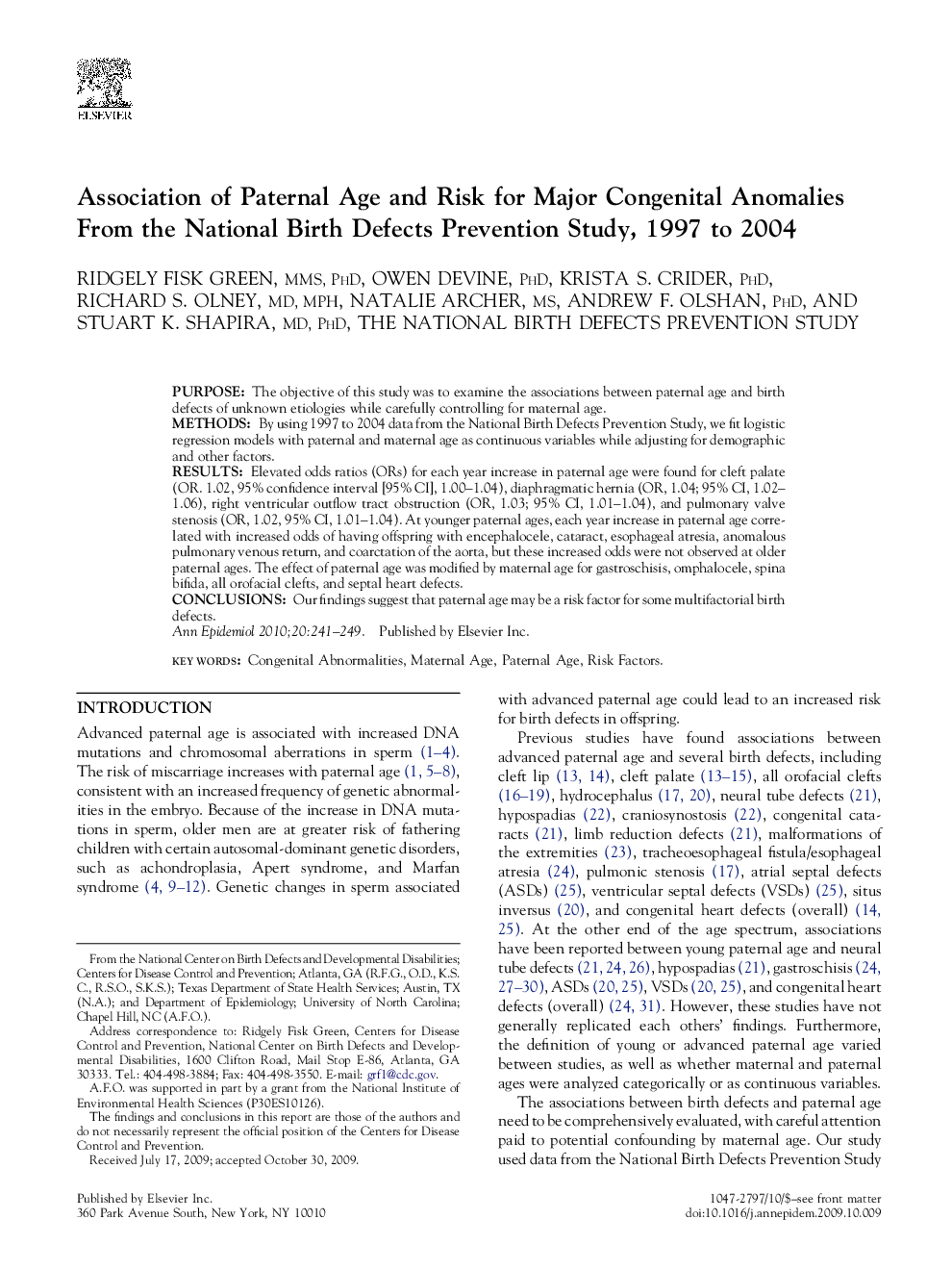| Article ID | Journal | Published Year | Pages | File Type |
|---|---|---|---|---|
| 3444804 | Annals of Epidemiology | 2010 | 9 Pages |
PurposeThe objective of this study was to examine the associations between paternal age and birth defects of unknown etiologies while carefully controlling for maternal age.MethodsBy using 1997 to 2004 data from the National Birth Defects Prevention Study, we fit logistic regression models with paternal and maternal age as continuous variables while adjusting for demographic and other factors.ResultsElevated odds ratios (ORs) for each year increase in paternal age were found for cleft palate (OR. 1.02, 95% confidence interval [95% CI], 1.00–1.04), diaphragmatic hernia (OR, 1.04; 95% CI, 1.02–1.06), right ventricular outflow tract obstruction (OR, 1.03; 95% CI, 1.01–1.04), and pulmonary valve stenosis (OR, 1.02, 95% CI, 1.01–1.04). At younger paternal ages, each year increase in paternal age correlated with increased odds of having offspring with encephalocele, cataract, esophageal atresia, anomalous pulmonary venous return, and coarctation of the aorta, but these increased odds were not observed at older paternal ages. The effect of paternal age was modified by maternal age for gastroschisis, omphalocele, spina bifida, all orofacial clefts, and septal heart defects.ConclusionsOur findings suggest that paternal age may be a risk factor for some multifactorial birth defects.
